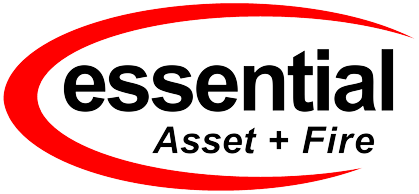A Practical Guide For Building Owners & Facility Managers
Quick Summary
Understanding the different types of fire extinguishers and their correct applications can make the difference between containing a minor incident and facing a catastrophic fire event. This guide outlines the various types of extinguishers, their appropriate uses.
Table Of Contents
Fire extinguishers are a fundamental component of any comprehensive fire safety strategy. Whether you manage a commercial premises, strata property, or industrial facility, understanding the different types of fire extinguishers and their correct applications can make the difference between containing a minor incident and facing a catastrophic fire event. This guide outlines the various types of extinguishers, their appropriate uses, and why ensuring correct placement, maintenance, and staff training is critical to compliance and safety.
This article is written with Australian Standards and NSW regulations in mind, providing clarity for property managers, owners, and facility operators.
Why Different Types Of Fire Extinguishers Matter
Not all fires are the same. They are classified according to the fuel that ignites them, and each type requires a different suppression method. Using the wrong extinguisher can not only fail to control the fire but may make the situation worse or create additional hazards.
Australian Standard AS 1851-2012 governs the routine servicing of fire protection systems and equipment. Equally important is AS 2444-2001, which provides guidance on the selection and location of portable fire extinguishers. Complying with these standards isn’t just about ticking a box; it’s about ensuring your staff and building occupants have the right tools at hand when seconds count.
The Six Main Types of Fire Extinguishers & Their Uses
Below is a breakdown of the most common types of fire extinguishers you’ll encounter in Australian workplaces, along with guidance on their best use cases.
1. Water Fire Extinguishers (Red Label)
- Best for: Class A Fires – Ordinary combustibles such as wood, paper, textiles, and plastics.
- How they work: Water extinguishers cool the burning material below its ignition point. They remove heat from the fire triangle (fuel, heat, oxygen), stopping combustion.
- Important: Never use water extinguishers on electrical fires (Class E) or flammable liquids (Class B) as this can cause electrocution or spread the fire.
- Common locations: Offices, schools, warehouses storing paper or timber products.
2. Foam Fire Extinguishers (Red with Blue Band)
- Best for: Class A & B Fires – Combustible materials and flammable liquids (petrol, oil, paints, solvents).
- How they work: Foam extinguishers create a blanket over the burning liquid, smothering the fire and preventing re-ignition. They also cool the surface.
- Important: Not suitable for electrical fires or cooking oils.
- Common locations: Garages, workshops, petrol stations, manufacturing plants.
3. Dry Chemical Powder (ABE) Fire Extinguishers (Red with White Band)
- Best for: Class A, B, C, and E Fires – General combustibles, flammable liquids, gases, and electrical equipment.
- How they work: ABE extinguishers interrupt the chemical reaction of the fire by coating the burning materials with a layer of fine powder.
- Strength: ABE extinguishers are versatile and commonly referred to as “multi-purpose” extinguishers.
- Common locations: Offices, factories, vehicles, construction sites.
4. Carbon Dioxide (CO₂) Fire Extinguishers (Red with Black Band)
- Best for: Class E Fires – Electrical equipment and Class B Fires involving flammable liquids.
- How they work: CO₂ displaces oxygen, suffocating the fire. It leaves no residue, making it ideal for sensitive electronics and clean environments.
- Important: Not effective on Class A fires and provides no cooling effect, meaning re-ignition is possible if the heat source remains.
- Common locations: Server rooms, electrical switchboards, offices with extensive IT infrastructure.
5. Wet Chemical Fire Extinguishers (Red with Oatmeal Band)
- Best for: Class F Fires – Cooking oils and fats.
- How they work: Wet chemical extinguishers react with hot oil to create a soapy, cooling layer, which smothers the fire and prevents re-ignition.
- Important: Specifically designed for kitchen environments. Using other extinguisher types on oil fires can cause dangerous flare-ups.
- Common locations: Commercial kitchens, restaurants, cafeterias.
6. Specialist Fire Extinguishers (e.g., BE Dry Powder, Metal Powder)
- Best for: Specific risks such as flammable gases (Class C) or combustible metals (Class D).
- How they work: Varies depending on the specific risk. BE powder extinguishers are typically for flammable liquids and gases but not recommended for Class A fires.
- Common locations: Laboratories, industrial sites dealing with metals like magnesium or lithium.
Matching Fire Extinguishers to Fire Classes
For clarity, here’s a quick reference table of fire classes and suitable extinguisher types:
| Fire Class | Common Fuels | Suitable Extinguisher Types |
| A | Paper, wood, fabric | Water, Foam, Dry Powder (ABE) |
| B | Petrol, oils, paints | Foam, CO₂, Dry Powder (ABE, BE) |
| C | Gases (LPG, natural) | Dry Powder (ABE, BE) |
| D | Metals (magnesium) | Specialist Metal Powder |
| E | Electrical fires | CO₂, Dry Powder (ABE) |
| F | Cooking oils, fats | Wet Chemical |
Ready To Discuss Your Requirements?
Our Experts Look Forward To Hearing From You!
Why Compliance & Maintenance Matter
Simply having the right extinguishers installed is not enough. Australian legislation requires that extinguishers be serviced every 6 months, as outlined in AS 1851-2012. This includes checks for pressure, accessibility, correct signage, and operational integrity.
In NSW, building owners must ensure compliance with the Environmental Planning and Assessment Regulation 2021, which mandates that essential fire safety measures are maintained to the performance level they were designed to achieve.
Neglecting this responsibility could invalidate insurance, lead to significant penalties, or even criminal liability if someone is harmed due to non-compliance.
Common Mistakes With Fire Extinguishers
- Incorrect placement
Extinguishers must be readily accessible, with signage clearly visible, and located in accordance with AS 2444-2001. - Mismatched types for risks
A water extinguisher in a kitchen or electrical plant is ineffective and dangerous. - Failure to train staff
Even with the right equipment, untrained staff may hesitate or misuse an extinguisher during an emergency. - Neglected maintenance
An extinguisher that is out of pressure or blocked won’t function when it matters most.
Staff Training: The Key to Effective Use
At Essential Asset & Fire Compliance, we often see businesses underestimate the importance of fire safety training. Knowing which extinguisher to use is just part of the picture. Training should cover:
- Recognising fire types quickly
- Operating extinguishers safely (PASS method: Pull, Aim, Squeeze, Sweep)
- Understanding evacuation protocols if suppression fails
- Regular refresher sessions for high-risk environments
Training helps reduce panic and ensures extinguishers are used effectively, minimising damage and injury.
Final Thoughts
The right fire extinguisher, correctly maintained, placed, and used, is one of the simplest yet most effective tools in protecting lives and property. But its effectiveness hinges on understanding. By matching extinguisher types to specific fire risks and committing to regular servicing and staff education, building owners and managers can ensure compliance, reduce risk, and foster a safer workplace.
If you’re unsure whether your current fire extinguishers are appropriate for your premises, or if you want to ensure your compliance obligations are fully met, reach out to our team today.
Frequently Asked Questions (FAQ)
A: The main types include Water, Foam, Dry Chemical Powder (ABE), Carbon Dioxide (CO₂), Wet Chemical, and Specialist extinguishers like BE Powder and Metal Powder.
A: Carbon Dioxide (CO₂) and Dry Chemical Powder (ABE) extinguishers are suitable for electrical fires (Class E) as they don’t conduct electricity.
A: No. Water extinguishers should never be used on flammable liquids or electrical fires. They are designed for ordinary combustibles like wood and paper (Class A).
A: In Australia, fire extinguishers must be inspected and serviced every 6 months under AS 1851-2012 to ensure they remain compliant and operational.
A: A Wet Chemical extinguisher is specifically designed for Class F fires involving cooking oils and fats in commercial kitchen environments.
A: Different fires require different extinguishing methods. Using the wrong extinguisher can worsen the fire or create new hazards, especially with electrical or flammable liquid fires.
For More Fire Safety Tips & Resources
Visit Our News & Articles Page Regularly To Stay Informed
Important Disclaimer: This article is general in nature and does not constitute legal or building compliance advice. Always consult a licensed fire safety practitioner and review relevant legislation for your property classification.
References:

Request a Free Quote
Get a no-obligation quote today—fast, easy, and completely free!




